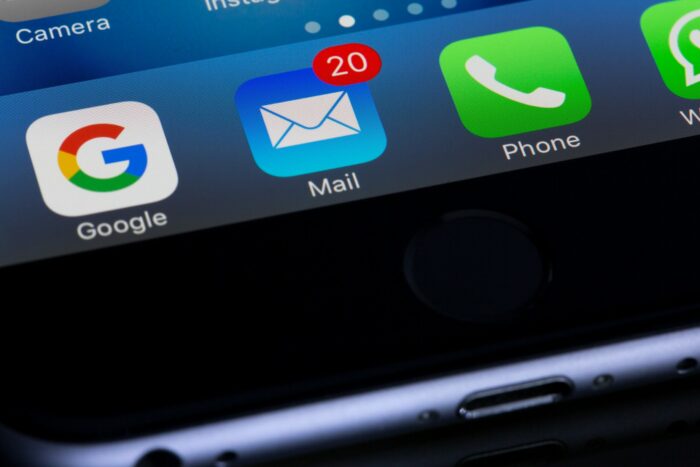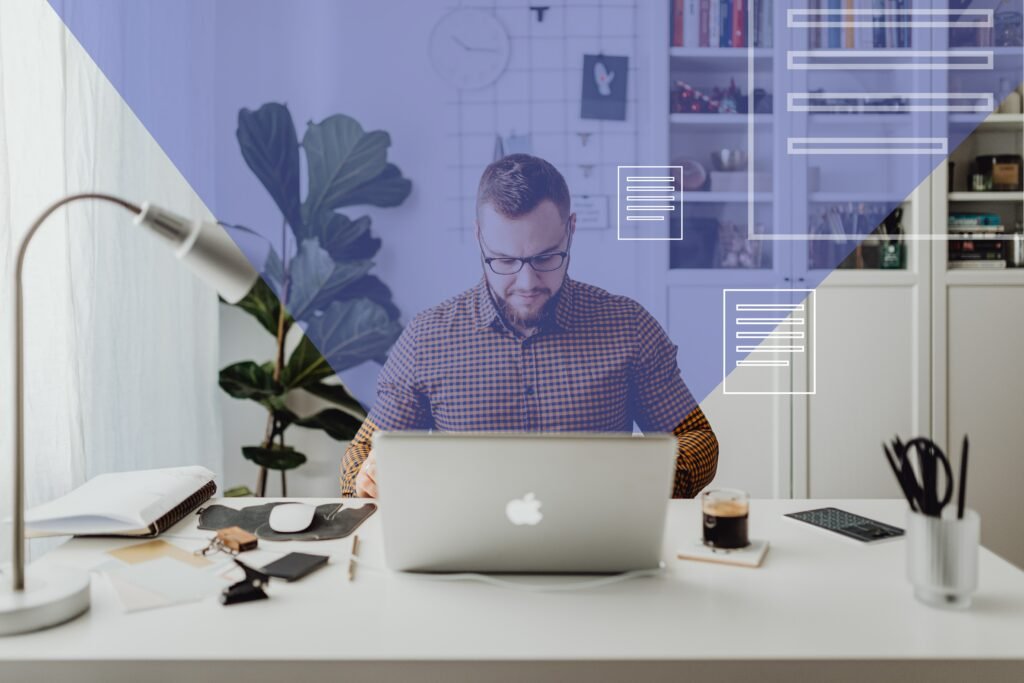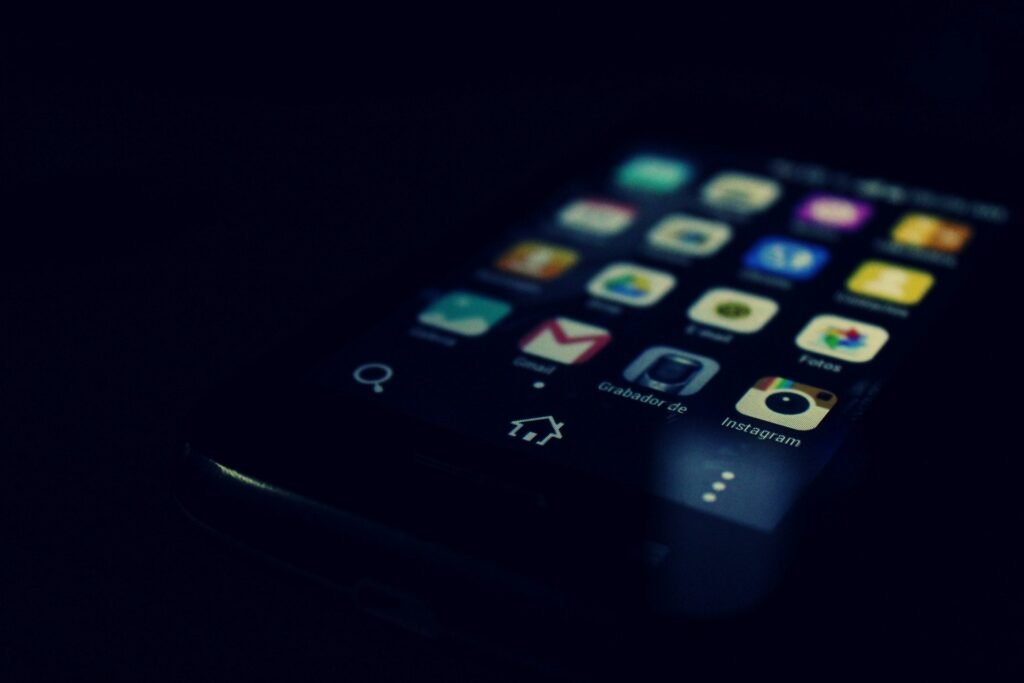Welcome to the digital age, where our inboxes are overflowing and our virtual spaces are cluttered with an endless stream of information. We live in a world where emails flood our inbox faster than we can hit the delete button, leaving us feeling overwhelmed and drowning in a sea of digital clutter. But fear not! In this blog post, we will explore effective strategies for managing email and reducing digital clutter.
Effective Strategies for managing Email and reducing Digital Clutter
Email overload is a common challenge faced by individuals and organizations alike. It hampers productivity, increases stress levels, and makes it difficult to find important messages amidst the chaos. If you’re tired of spending countless hours sifting through your inbox or searching for that one crucial email buried beneath piles of unnecessary messages, then read on!
In this article, we will delve into practical tips for managing your inbox more efficiently while also exploring alternative communication platforms that can help reduce reliance on email. We’ll discuss how to declutter your virtual spaces by adopting minimalist approaches and prioritizing emails effectively.
Furthermore, we’ll uncover tools and automation techniques that streamline your email workflow to save you time and energy. By implementing these strategies into your daily routine, you’ll regain control over your inbox, boost productivity levels, and experience a sense of calm amidst the digital storm.
So buckle up as we embark on this journey together – conquering the overwhelming world of emails while reclaiming our virtual sanctuaries from the clutches of digital clutter!
Understanding the Impact of Email Overload and Digital Clutter
In today’s fast-paced world, email has become the primary mode of communication for both personal and professional matters. It’s convenient, quick, and allows us to stay connected with just a few clicks. However, this convenience comes at a cost – email overload and digital clutter:
- Email overload occurs when our inboxes are bombarded with an overwhelming number of messages that require our attention. We find ourselves spending precious time sifting through countless emails, trying to distinguish between what’s important and what can be ignored. This constant influx of information not only hampers productivity but also increases stress levels.
- Digital clutter is another consequence of our reliance on email. Our virtual spaces become filled with old emails, subscriptions we no longer need or want, attachments from years ago – all taking up valuable storage space and making it difficult to locate important files when needed.
- The impact of email overload and digital clutter goes beyond just wasting time or causing frustration. It affects our mental well-being as well. The constant barrage of notifications can lead to feelings of overwhelm and anxiety while the inability to find crucial information quickly can result in missed deadlines or opportunities.
- To effectively manage email overload and reduce digital clutter, it is essential to implement strategies that prioritize inbox organization while decluttering unnecessary elements from our virtual spaces. By doing so, we not only regain control over our communications but also create a more streamlined workflow that promotes efficiency and reduces stress.
So let’s dive into practical tips for managing your inbox effectively while also exploring alternative communication platforms that can help alleviate the burden caused by excessive reliance on email!
How to manage your inbox?
In today’s digital age, our inboxes can quickly become overwhelming with a constant influx of emails. Managing your inbox efficiently is crucial for staying organized and reducing digital clutter. Here are some effective strategies to help you take control of your email:
1. Set aside dedicated time: Schedule specific blocks of time each day to focus solely on managing your inbox. This will prevent you from constantly checking and getting distracted by new emails.
2. Prioritize and categorize: As soon as you open an email, decide its importance and urgency. Use folders or labels to categorize emails into different sections such as “urgent,” “to-do,” or “follow-up.” This will help you easily locate important messages later.
3. Unsubscribe ruthlessly: Take the time to unsubscribe from newsletters, promotions, and subscriptions that no longer interest you or serve a purpose in your life. This will significantly reduce the number of unnecessary emails flooding your inbox.
4. Use filters wisely: Utilize filters to automatically sort incoming messages based on senders, subjects, or keywords into specific folders. This can help streamline your inbox further and keep it organized.
5.Clean up regularly: Regularly delete old or irrelevant emails to free up space in your mailbox. Consider archiving important conversations instead of keeping them all in the primary inbox.
By implementing these strategies consistently, you’ll be able to manage your inbox effectively while reducing digital clutter and improving productivity.
Tips for reducing email and digital clutter
Tips for Reducing Email and Digital Clutter
1. Unsubscribe and Filter: One of the most effective ways to reduce email clutter is by unsubscribing from newsletters, promotional emails, and other unnecessary subscriptions. Take a few minutes each day to unsubscribe from emails that you no longer find useful or relevant.
2. Set Clear Boundaries: Establish specific times throughout the day dedicated solely to checking and responding to emails. This will help prevent constant interruptions and distractions caused by an overflowing inbox.
3. Create Folders or Labels: Organizing your emails into folders or labels can make it easier to locate important messages when needed. Consider creating categories based on projects, clients, or urgency levels.
4. Use Email Filters: Utilize filters in your email settings to automatically sort incoming messages into designated folders based on sender, subject line, keywords, or other criteria. This will allow you to prioritize important emails while keeping less crucial ones out of sight until you have time for them.
5. Implement Inbox Zero Strategy: Aim to achieve “inbox zero” regularly by processing every email as it arrives – either deleting it if irrelevant, replying immediately if it requires only a quick response, delegating tasks if necessary, or filing it away for future reference.
6. Limit Notifications: Constant notifications can be overwhelming and lead to digital clutter in the form of distraction and anxiety. Adjust your notification settings so that you receive alerts only for urgent matters instead of every new email that comes in.
Remember, reducing email clutter is an ongoing process that requires consistent effort and discipline but implementing these tips can significantly improve your productivity and declutter your digital space.
Alternatives to email
Alternatives to email have become increasingly popular as people search for more efficient and streamlined ways to communicate. While email is a staple in many workplaces, it can often contribute to digital clutter and overwhelm. Thankfully, there are several alternative tools that can help reduce the reliance on email:
- One such alternative is instant messaging platforms like Slack or Microsoft Teams. These tools allow for real-time communication and collaboration within teams or departments. With features like chat channels, file sharing, and integrations with other apps, these platforms provide a centralized hub for all team communication needs.
- Another alternative gaining traction is project management software such as Asana or Trello. These tools offer a structured way to organize tasks, assign responsibilities, set deadlines, and track progress—all without the need for endless back-and-forth emails. By centralizing project-related discussions and updates in one place, these platforms streamline communication while reducing inbox overload.
- Video conferencing has also emerged as an effective alternative to traditional email correspondence. Platforms like Zoom or Google Meet enable face-to-face meetings regardless of geographic location. Video conferences can be especially beneficial when discussing complex topics that may require visual aids or nonverbal cues.
- In addition to these alternatives, collaborative document editing tools like Google Docs or Microsoft Office Online allow multiple users to work on the same document simultaneously. This eliminates the need for exchanging multiple versions via email and ensures everyone is always working on the most up-to-date version.
While it may not be possible to completely eliminate email from our lives just yet, exploring these alternatives can help reduce dependency on overflowing inboxes while promoting efficient communication within teams and organizations.
Unsubscribing and Filtering: Reducing Digital Clutter in Your Inbox
Unsubscribing and filtering are two powerful strategies that can significantly reduce digital clutter in your inbox. By unsubscribing from unwanted newsletters and promotional emails, you can instantly declutter your inbox and only receive messages that truly matter to you:
- Start by going through your inbox and identifying email subscriptions that you no longer find valuable or relevant. Most newsletters have an unsubscribe link at the bottom of their emails, making it easy for you to opt-out with just a few clicks. Be diligent in this process and unsubscribe from as many unnecessary subscriptions as possible.
- In addition to unsubscribing, utilizing email filters can help streamline your inbox even further. Filters allow you to automatically sort incoming emails into specific folders based on criteria such as sender, subject line, or keywords. This way, important emails will be organized separately while less important ones won’t clutter your main inbox.
- Take some time to set up filters according to your preferences and needs. For example, you could create a filter that automatically moves all social media notifications into a designated folder so they don’t distract you from more important messages.
By implementing these strategies of unsubscribing and filtering, you’ll experience a significant reduction in digital clutter within your inbox. Your focus will improve as irrelevant emails are minimized, allowing for better productivity throughout the day.
Adopting a Minimalist Approach: Strategies for Decluttering Digital Spaces
In today’s digital age, our virtual lives can easily become cluttered and overwhelming. From overflowing email inboxes to countless files and folders on our computers, it’s no wonder we often feel weighed down by the sheer amount of digital information we need to manage. That’s where adopting a minimalist approach can be incredibly helpful:
- One key strategy for decluttering your digital spaces is to start with organization. Take some time to go through your files and folders, deleting anything that is no longer necessary or relevant. Create a simple folder structure that makes sense to you, so you can easily locate documents when needed.
- Another important aspect of adopting a minimalist approach is practicing digital hygiene. Just as physical clutter accumulates over time if left unattended, so does digital clutter. Make it a habit to regularly clean up your computer desktop, delete unused apps and programs, and unsubscribe from newsletters or mailing lists that are no longer of interest.
- When it comes to managing emails specifically, consider implementing an inbox zero policy. This means striving for an empty inbox by either responding immediately or archiving messages once they’ve been addressed. Set aside dedicated time each day or week to tackle incoming emails rather than letting them pile up indefinitely.
- Additionally, reducing visual distractions can help create a more streamlined digital space. Consider using minimalistic themes or wallpapers on your devices that promote focus and simplicity. Remove unnecessary icons from your desktop or toolbar and keep only the essential ones within easy reach.
- Taking regular breaks from technology altogether can also contribute significantly towards decluttering your mind and fostering mental clarity. Allocate specific periods during the day where you disconnect entirely from screens – whether it’s going for walks outdoors or engaging in offline activities like reading books or pursuing hobbies.
By adopting these strategies for decluttering digital spaces with a minimalist mindset, you’ll find yourself feeling lighter and more productive in both work and personal life. Embracing simplicity and organizing your virtual world can lead to greater peace of mind and more quality time for the important things.
Prioritizing Emails: Strategies for Managing Inbox Overload
When it comes to managing your inbox, one of the most crucial aspects is prioritization. With a flood of emails pouring in daily, it’s essential to develop effective strategies for staying on top of things and avoiding overwhelm:
- One strategy is to create specific folders or labels within your email client to categorize incoming messages based on their importance or urgency. This way, you can quickly identify which emails require immediate attention and which ones can be addressed later.
- Another helpful approach is to establish email filters or rules that automatically sort incoming messages into appropriate folders based on criteria such as sender, subject line, or keywords. By automating this process, you save time and ensure that important emails don’t get buried amidst the clutter.
- Additionally, consider implementing a system where you set aside dedicated blocks of time throughout the day to focus solely on checking and responding to emails. This prevents constant interruptions and allows you to concentrate on other tasks without feeling overwhelmed by an overflowing inbox.
- It’s also beneficial to develop a habit of regularly archiving or deleting old and irrelevant emails. Keeping your inbox clutter-free not only helps with organization but also improves overall productivity.
- Remember that not all emails are created equal; some may require immediate action while others can wait. Prioritize accordingly by assessing each message’s importance, relevance, and deadline. By doing so, you’ll ensure that urgent matters are addressed promptly while reducing unnecessary stress caused by email overload.
In conclusion, Effectively managing your email inbox requires implementing practical strategies for prioritization. Create folders or labels, automate sorting with filters/rules, dedicate focused time slots for checking emails, and regularly clean out unnecessary clutter. By adopting these practices, you’ll regain control over your digital communication and reduce the overwhelming burden of managing an overloaded inbox.
Streamlining Email Workflow: Tools and Automation for Efficiency
In today’s fast-paced digital world, managing email efficiently is crucial to staying organized and productive. Thankfully, there are various tools and automation options available that can help streamline your email workflow, saving you time and reducing clutter:
- One useful tool for managing emails is a mail client with built-in features like filters and rules. These allow you to automatically sort incoming messages into specific folders based on criteria such as sender or subject line. By setting up these filters, you can ensure that important emails land directly in your inbox while less urgent ones are filed away for later reference.
- Another helpful automation option is using canned responses or email templates. If you find yourself frequently sending similar types of emails, creating templates can be a real time-saver. With just a few clicks, you can insert pre-written text and customize it as needed before sending it off – no more wasting time reinventing the wheel with each message!
- Additionally, consider utilizing scheduling tools for email replies. Rather than constantly checking your inbox throughout the day and getting sidetracked by new messages, schedule dedicated blocks of time specifically for responding to emails. This way, you can focus on other tasks without interruptions while ensuring timely replies to important communications.
- For those who receive an overwhelming amount of newsletters or promotional emails but don’t want to unsubscribe completely, consider using an inbox organization tool like Unroll.me. This handy service compiles all your subscription emails into one daily digest so they don’t clutter your primary inbox.
- Automation apps like IFTTT (If This Then That) also offer creative ways to manage email-related tasks effectively. For instance, you could set up an applet that saves attachments from specific senders directly into cloud storage services like Dropbox or Google Drive – eliminating the need to manually download and organize files.
By employing these tools and automation techniques wisely in your email workflow management process, you’ll free up valuable time that can be better spent on important tasks. Experiment with different options to find what works best for you and your daily routine.
Conclusion
By implementing effective strategies for managing email and reducing digital clutter, you can regain control over your inbox and digital spaces. Email overload can be overwhelming, but with the right approach, you can streamline your workflow and improve productivity. Start by understanding the impact of email overload and digital clutter on your mental well-being and productivity. Recognize that constantly checking emails is not an efficient use of time. Instead, set specific times to check and respond to messages throughout the day. To manage your inbox effectively, implement tips such as organizing emails into folders or using labels/tags for easy retrieval. Unsubscribe from unnecessary newsletters or promotional emails to reduce clutter in your inbox. Utilize filters to automatically categorize incoming messages based on sender or subject. Consider exploring alternatives to email communication for certain tasks. Instant messaging platforms or project management tools may be more efficient for quick discussions or collaboration within teams. Adopting a minimalist approach can also help declutter your digital spaces. Delete old files that are no longer needed and organize remaining documents into clearly labeled folders. Regularly clean up your computer desktop by removing unnecessary icons.
When it comes to prioritizing emails, develop a system that works best for you—whether it’s sorting them by urgency, importance, or deadline. Respond promptly to urgent matters while scheduling dedicated time blocks for less critical correspondence. Streamline your email workflow further with various tools and automation options available today. Use features like auto-responders when away from work or schedule sending emails at specified times using delayed delivery settings. Remember that effective management of email does not mean responding immediately to every message—it means being proactive in setting boundaries and optimizing efficiency without sacrificing quality communication.
Incorporate these strategies into your daily routine gradually until they become habits. Be patient with yourself during this process as change takes time. Reducing email overload and digital clutter will not only enhance your productivity but also contribute positively towards achieving a healthier work-life balance—a goal worth striving for in our fast-paced digital world. So take charge, declutter your digital spaces, and reclaim control of your inbox!








![Stress Management Techniques for Administrative Professionals [Best 7] 9 Stress Management Techniques for Administrative Professionals](https://zoets.b-cdn.net/wp-content/uploads/2024/02/pexels-mikhail-nilov-8297240-scaled-e1708541459861.jpg)

![Saudi Oil Industry Key Stats Unveiled [2024] 11 Saudi Oil Industry Key Stats](https://zoets.b-cdn.net/wp-content/uploads/2024/02/h.jpg)


![Budgeting and Financial Management for Administrative Teams [Best 8] 14 Budgeting and Financial Management for Administrative Teams](https://zoets.b-cdn.net/wp-content/uploads/2024/02/pexels-tima-miroshnichenko-6693656-scaled-e1707650802680.jpg)
![Conflict Resolution Strategies for Administrative Professionals [Best 8] 15 Conflict Resolution Strategies for Administrative Professionals](https://zoets.b-cdn.net/wp-content/uploads/2024/02/pexels-tima-miroshnichenko-5686082-scaled-e1707649239731.jpg)